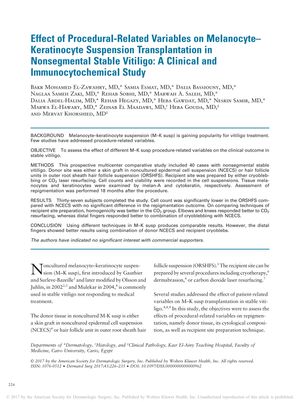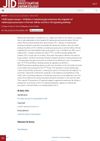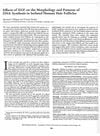Effect of Procedural-Related Variables on Melanocyte–Keratinocyte Suspension Transplantation in Nonsegmental Stable Vitiligo: A Clinical and Immunocytochemical Study
February 2017
in “
Dermatologic surgery
”

TLDR Different techniques for vitiligo treatment work similarly well, with some better for specific body areas.
This study evaluated the effects of different procedural variables on melanocyte–keratinocyte suspension transplantation in 40 patients with nonsegmental stable vitiligo. It compared noncultured epidermal cell suspension (NCECS) and outer root sheath hair follicle suspension (ORSHFS) as donor tissues, and CO₂ laser resurfacing versus cryoblebbing as recipient site preparations. Results indicated no significant difference in overall repigmentation between the techniques, though specific combinations were more effective for certain body areas. NCECS had higher cell counts, while ORSHFS showed faster healing. CO₂ laser resurfacing provided better homogeneity, especially on elbows and knees, whereas cryoblebbing combined with NCECS was more effective for distal fingers. Overall, 35% of patients achieved ≥75% repigmentation, suggesting that different techniques produced comparable results with specific advantages for certain body areas.



